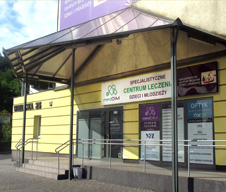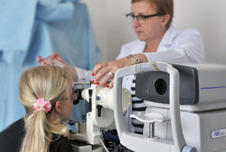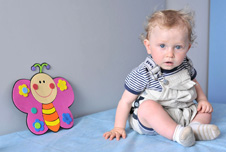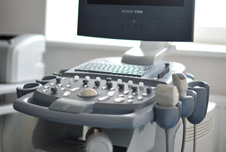EEG Lab
Reception:
In person: 8:00 am to 7:00 pm
By phone:
National Health Fund Visits +48 12 413 00 99
Paid Fund +48 606 445 411
The following data is required to make an appointment:
- Full address with postal code,
- Patient PESEL [ID] number.
EEG – Electroencephalograph
An EEG is a painless, harmless test that lasts about half an hour. In this time, the bioelectrical activity of your brain is recorded. The EEG is carried out by a technician using an electroencephalograph machine. The EEG recordings are then evaluated by a specialist doctor.
Indication for EEG:
- Diagnosis and identification of epilepsy types,
- Assessment of treatment outcomes,
- Headaches, traumatic states,
- Sleep disorders, behavioural disorders, fainting and others.
Preparation
The day before the test:
- wash your hair without using any hair-care products,
- have a meal – EEGs can’t be done on an empty stomach.
Newborns and infants can be fed by their mother only after the EEG cap has been placed on their head by the technician. After eating, the baby usually falls asleep more easily and a sleepiness record can be made. This is essential for evaluating the EEG.
Never stop taking the medicine prescribed by the doctor before your EEG!
It’s okay for your child to hug a favourite toy or bear, etc.
Test
Prior to the test, the technician will ask questions to which you need to provide detailed answers. For example, how does your child feel? Does it sleep well at night? Does it currently have a temperature? Does it have a headache? How long since its last meal? When was the last seizure? (for children with epilepsy), and various other important questions that could affect the outcome of the EEG.
Inform the EEG technician if the doctor changed the treatment between the time your referral was issued, and the time of your actual EEG test. In addition, you should inform the technician about any other medicines, including vitamins and anti-allergy medication that your child is taking.
The EEG is performed in a lying position. 16 to 24 electrodes are placed on the patient’s head. In the places where the electrodes are attached, the scalp is degreased by the technician. To improve electrical conductivity, the surface of the electrodes are covered with a special gel. During the test, the patient should be relaxed and remain motionless.
 During an EEG, the following methods to stimulate the electrical activity of the brain will be used:
During an EEG, the following methods to stimulate the electrical activity of the brain will be used:
- Opening and closing the eyes,
- 3–4 minute of hyperventilation (30–40 deep breaths per minute),
- Photostimulation – the effect of flashing lights of different frequencies (eyes closed during this test),
- Physiological sleep – less commonly used.
Test results
A specialist doctor with qualifications in assessing and describing EEG results will examine the recording.



